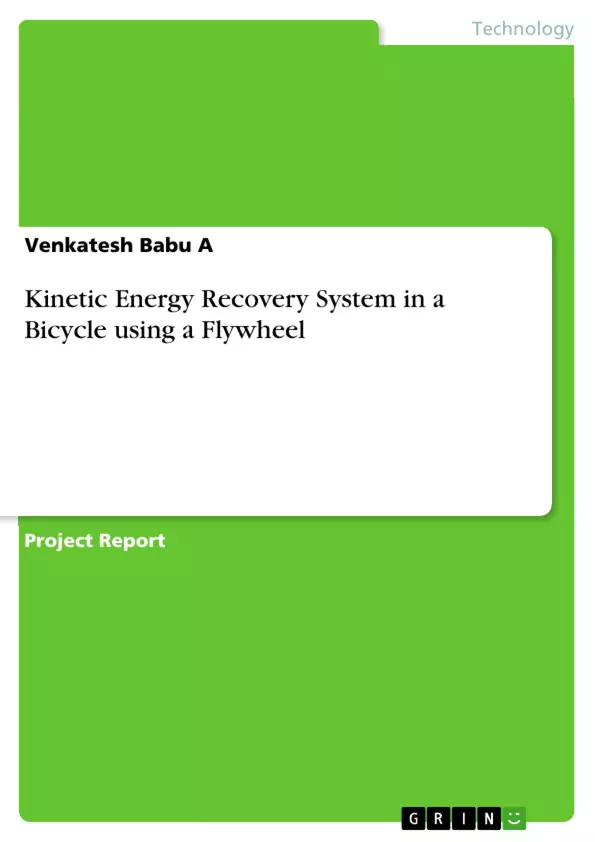Natural resources conservation has become a requirement in today’s world, mainly in the area of new technology. In many rolling applications maximum energy is lost during deceleration or braking. This problem has been fixed with the introduction of regenerative braking.
The Kinetic Energy Recovery System (KERS) is a system for recovering the moving vehicle's kinetic energy under braking and also to utilize the usual loss in kinetic energy. When riding a bicycle, a great amount of kinetic energy is lost while braking, making start up fairly difficult. Here we used the mechanical kinetic energy recovery system by means of a flywheel to store the energy which is normally lost during braking, and reuse it to help propel the rider when starting. The rider can charge the flywheel when slowing or descending a hill and boost the bike when accelerating or climbing a hill. The flywheel increases maximum acceleration and can perform pedal energy savings during a ride where speeds are between 6 and 5 kmph.
Table of Contents
- Introduction
- Overview and Background
- Flywheel Kinetic Energy Storage
- Design of Components
- Fabrication of Components
- Assembly and Working
- Cost Estimation
- Conclusion
- Bibliography
Objectives and Key Themes
This project report aims to demonstrate the feasibility of using a flywheel kinetic energy recovery system (FKES) on a bicycle. This system aims to improve the efficiency of the bicycle by recovering energy lost during braking and using it to provide additional power for acceleration. The project focuses on designing, fabricating, and testing a prototype of the FKES system on a bicycle.
- Flywheel kinetic energy storage (FKES)
- Regenerative braking
- Energy efficiency in bicycle systems
- Application of FKES for alternative energy sources
- Cost-effectiveness of FKES implementation
Chapter Summaries
- Introduction: This chapter introduces the concept of flywheel kinetic energy storage and regenerative braking, highlighting their potential benefits for improving bicycle efficiency and reducing reliance on conventional energy sources. The chapter also provides an overview of the project's objectives and expected outcomes.
- Design of Components: This chapter details the design process for the various components of the FKES system, including the flywheel, the braking mechanism, and the energy transfer system. It analyzes the technical considerations for each component to ensure optimal performance and integration into the bicycle system.
- Fabrication of Components: This chapter describes the fabrication process for the FKES system components, outlining the materials used, manufacturing techniques, and quality control measures. It provides insights into the challenges and practical considerations encountered during the fabrication phase.
- Assembly and Working: This chapter focuses on the assembly of the FKES system onto the bicycle, detailing the procedures and techniques used for integration. It also provides a comprehensive description of how the system operates, including the energy transfer and braking mechanisms.
- Cost Estimation: This chapter presents a detailed analysis of the cost associated with designing, fabricating, and implementing the FKES system. It includes cost estimations for materials, labor, and manufacturing processes, providing insights into the economic feasibility of the proposed solution.
Keywords
The primary keywords and focus topics of this report are: Flywheel Kinetic Energy Storage (FKES), Regenerative Braking, Bicycle Efficiency, Energy Recovery, Energy Storage, Cost-Effective Solutions, Mechanical Engineering, Sustainable Transportation.
- Quote paper
- Venkatesh Babu A (Author), 2016, Kinetic Energy Recovery System in a Bicycle using a Flywheel, Munich, GRIN Verlag, https://www.grin.com/document/352343



